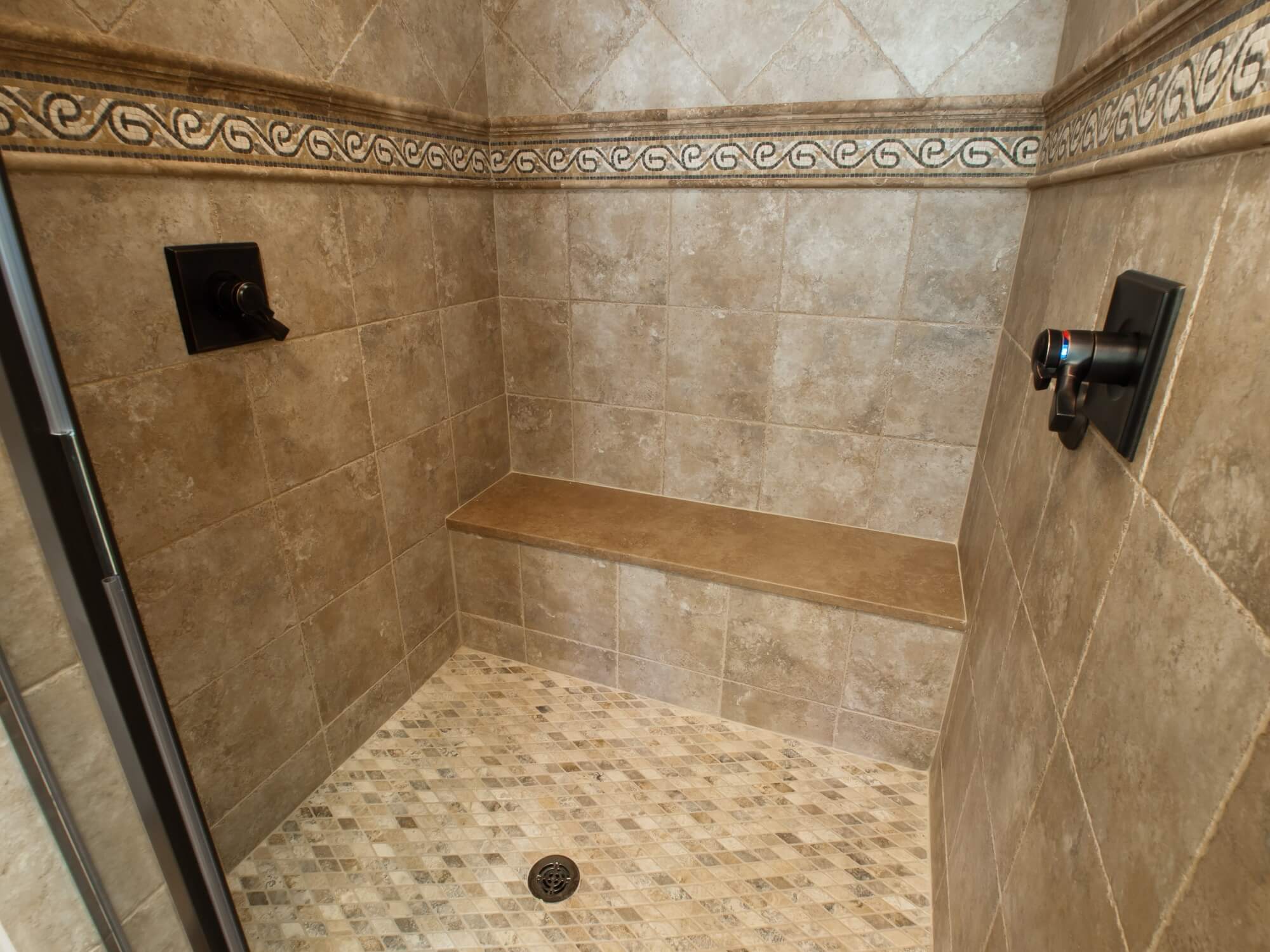How to Care for a Travertine Shower

Travertine is a natural stone that brings a touch of luxury to any space. This textured stone is the perfect choice for bathrooms since it offers a versatile aesthetic and an impressive range of colors. If you have a travertine shower, it’s important to know how to care for it properly so it can reward you with beauty for years to come. Since travertine is porous, there are some things you should know when it comes to caring for your shower.
Sealing a Travertine Shower
Due to its porous nature, travertine showers should have a sealer applied to keep water from absorbing into the pores of the tiles. Over time, water can create stains on your travertine, which can make it look unsightly. Even items like shampoo, soap, and the oil from your body can cause the tile to become damaged after a while. In order to combat this, a quality sealer should be applied after installation. To maintain the travertine, reapplication of the sealer should be done at least once a year to help it maintain its natural beauty.
Cleaning a Travertine Shower
To keep your travertine shower clean, immediately clean up any spills from shampoos, soaps, or any other products. If these items sit on the surface of the stone, it can etch the surface and cause visible damage. When you clean your travertine shower, always choose pH-neutral products that won’t cause further etching. You can also find natural stone cleaners that are specially made for products like travertine. Use this cleaner every two weeks and thoroughly clean the tiles. Stay away from common household cleaners that contain ingredients like bleach and ammonia. They can wreak havoc on your travertine, even if you have sealer applied.
Keep Clear of Soap Scum
Soap scum is the most common cause of dirt on a travertine shower. In fact, you can usually see it building up on the surface of your shower floor and along the bottom of the walls. Soap scum looks like a white, chalky film or it might even look a little shiny. Not only does soap scum look ugly, but it can also cause serious damage to your tiles. When soap scum sits for a long period of time, hard water deposits can accumulate. This will eat away at your travertine shower and create pitting and a dull look.
To effectively remove soap scum from your travertine shower, try the following:
- Use a non-acidic soap scum remover that is specifically designed for natural stone like travertine.
- Always follow the directions as listed on the product label to ensure effectiveness and proper use.
- Some soap scum removers require you to leave them on the surface of your travertine tiles for about 20 to 30 minutes before you remove it. This will help loosen up the soap scum and make it much easier to remove.
- Use a soft scrub pad or sponge to remove the soap scum. Never use abrasive pads, as they can scratch the surface of your travertine tiles. You might need to perform the scrubbing several times for stubborn spots that have excessive buildup.
- If you follow these steps and the soap scum still remains, repeat the process again until it’s completely gone.
- Tumbled travertine is commonly used on shower floors since they don’t have a polished finish. If you have tumbled travertine floors in your shower, you can use a more aggressive scrubbing pad to remove the soap scum since it shouldn’t damage the smooth finish that your shower walls may have.
Travertine Shower Maintenance
To get the most from your travertine shower, it’s important to practice regular maintenance. Remember that water carries soap and other particles that can be directly deposited into the stone. Any moisture left behind will encourage the growth of mold and mildew and make any sealer weaker. To maintain the walls of your travertine shower, use a squeegee and clean the walls and your glass shower door. With constant use of a squeegee, you can eliminate hard water stains that can build up over time. You can keep the squeegee stored in your bathroom and make it a habit to use it every time you get out of the shower.
Carefully monitor your travertine shower and look for things like loose or damaged grout. Repair any issues with the grout as soon as possible to keep water damage to a minimum. If your tiles start to look dark, you should apply a new coat of sealer. Make sure the tile is completely dry before you add the sealer to the shower. Look carefully for signs of mold or mildew. These issues can be avoided by properly drying your shower using a squeegee and leaving the shower door open so it can air out. Dry corners and edges of your shower to remove excess standing water.
Clean the travertine shower with a special stone cleaner weekly or at least every two weeks. Once the cleaner is applied, buff it clean using a microfiber cloth. Never use abrasive scrubbers or sponges on travertine since they can damage the integrity and beauty of the tile. Remove soap scum as often as possible. Special stone scrub products are available that can help you remove mineral deposits. Always use these products with caution if your travertine shower is polished. Add a layer of sealer to your travertine every six months for best results.
With a bit of TLC and some regular maintenance, you can ensure that your travertine shower stays beautiful for years to come. Remove all soap scum and mildew as soon as possible, and thoroughly dry your shower every time you’re done. These easy steps will keep the travertine in excellent condition so you’ll have a shower that’s warm and welcoming.


